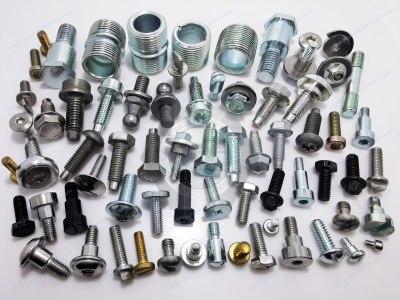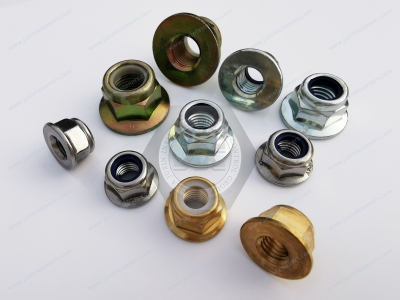Call Us
+86 136 6007 9809
Call Us
+86 136 6007 9809
Oct. 29, 2023
一、 Characteristics of fastener electroplated zinc-nickel alloy:
1. Excellent corrosion resistance. The same thickness, zinc-nickel alloy layer corrosion resistance for pure zinc plating 4-8 times, the plating itself on the steel substrate for the anodic plating, can provide effective cathodic protection.
2. Thickness is maintained within the thread tolerance range of 5-15μm thickness, which can obtain a longer period of corrosion resistance. The coating itself is shown to have a very low corrosion rate.
3. There is enough bonding force between the coating and the substrate to ensure that the coating exerts its high corrosion resistance.
4. Excellent heat fatigue resistance. The corrosion resistance of the plated layer does not change between -60-250℃ after radical cooling and radical heat treatment.
5. Processability is comparable with pure zinc plating. After deformation processing, the coating still has better corrosion resistance than pure zinc plating.
6. Low hydrogen embrittlement. Zinc-nickel alloy plating hydrogen embrittlement rate of only 1.5%, while electroplating pure zinc embrittlement rate is generally more than 40%, with a bright cadmium-plated layer of about 18%.
7. The hardness of the zinc-nickel alloy plating layer is higher than pure zinc, thus it has better wear resistance.
8. The process is easy to operate. The process and equipment of zinc-nickel alloy plating are the same as that of pure zinc plating, and there is no need to add special equipment.
Process flow: acceptance before plating → degreasing → washing → pickling and descaling → cleaning → activation → washing → electroplating zinc-nickel alloy → washing → passivation → washing → drying → sorting and packing.


二、Technical indexes of zinc-nickel alloy plating for fasteners.
1. Plating nickel content: plating corrosion resistance and nickel content has a close relationship. Experiments and relevant data have proved that the nickel content of about 13% of zinc-nickel alloy plating corrosion resistance is the best. Therefore, the nickel content of zinc-nickel alloy is usually controlled in the range of 8-16% to meet the corrosion resistance requirements.
2. Plating thickness: usually the thickness of the coating is 5 ~ 15μm can meet the requirements of corrosion resistance. For components without tolerance requirements, such as guardrails, the thickness can be more than 20μm.
3. Passivation film quality: zinc-nickel alloy passivation treatment greatly improves corrosion resistance. The passivation film is divided into three kinds: white, black, and colorful, and the order of its corrosion resistance is white passivation < black passivation < colorful passivation.
4. Coating bonding force: qualified according to GB5270 various methods of testing.
5. Corrosion resistance: the nickel content of about 13% of the coating after color passivation, neutral salt spray test more than 2500 hours without red rust, is expected to resist atmospheric corrosion for more than 15 years.
Application range of electroplated zinc-nickel alloy:
It can be widely used in the automotive industry, fastener industry, cable bridges, highway guardrails, and steel components in seawater environments for corrosion protection.
If you are looking for high-quality fastener screws & all kinds of fasteners or technical support for structural design, please contact me.adelajonly@gmail.com. Thanks.
Website: www.juxinfasteners.com
Contact Us
Tel.:
+86 020 8621 0320
+86 020 3121 6067
Technical Support:
Navigation
SEND INQUIREY